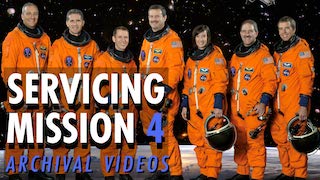Wide Field Camera 3: Extending Hubble's Vision, Packed with Power
When placed on the Hubble Space Telescope, WFC3 will provide unprecedented capabilities for imaging the cosmos at near-ultraviolet and at near-infrared wavelengths. The Wide Field Camera 3 (WFC3) will study a diverse range of objects and phenomena, from early and distant galaxy formation to nearby planetary nebulae, and finally our own backyard — the planets and other bodies of our Solar System. WFC3 extends Hubble's capability not only by seeing deeper into the universe but also by seeing simultaneously into the infrared and ultraviolet. WFC3 can, for example, simultaneously observe young, hot stars (glowing predominantly in the ultraviolet) and older, cooler stars (glowing predominantly in the infrared) in the same galaxy.
Credits
Please give credit for this item to:
NASA/Goddard Space Flight Center
-
Animator
- Bob Sauls (Frassanito and Associates)
-
Video editor
- Michael McClare (HTSI)
-
Producer
- Michael McClare (HTSI)
-
Videographers
- Victoria Weeks (HTSI)
- Stuart A. Snodgrass (HTSI)
- Michael McClare (HTSI)
-
Writer
- Michael McClare (HTSI)
Release date
This page was originally published on Wednesday, June 18, 2008.
This page was last updated on Wednesday, May 3, 2023 at 1:55 PM EDT.
Missions
This visualization is related to the following missions:Datasets used in this visualization
-
[HST: WFPC2]
ID: 655Wide-Field Planetary Camera 2 (WFPC2) was installed in Dec 1993 and used to obtain high resolution images of astronomical objects. This camera was removed in the last servicing mission so it is no longer in service.
This dataset can be found at: http://www.stsci.edu/hst/wfpc2/wfpc2_diag.html
See all pages that use this dataset
Note: While we identify the data sets used in these visualizations, we do not store any further details, nor the data sets themselves on our site.
